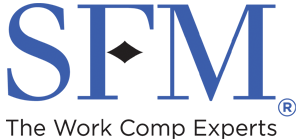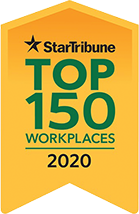The growing popularity of hybrid work schedules has many employers wondering about the workers’ compensation and safety implications.
There are some important legal and workplace safety considerations to be aware of if you have employees who work both remotely and on-site.
Injuries at home
Workers’ compensation coverage extends to hybrid employees whether they are working remotely or on-site at your office.
Overall, an employee’s injuries are usually compensable if they happen during the actual performance of work, and they are sustained during normal working hours. However, the presumption of the injury being work-related is what sets remote office work apart from injuries sustained on-site at an employer’s office.
In most cases, an employee injured in their home or remote office has the burden of proof, which means they must be able to document that their injury occurred within the course and scope of employment.
Personal comfort needs
Injuries that occur while meeting personal comfort needs are typically compensable whether an employee is working on-site or remotely. These can include injuries that happen while taking bathroom breaks, coffee and meal breaks, or other similar comfort tasks.
That does not extend to injuries suffered by employees working at home while they take breaks to complete personal life and home-related tasks such as caring for a child, carrying personal items up and down stairs, or doing housework. In those cases, compensability is determined by an investigation into whether the activity occurred in the course and scope of employment.
Commuting to work
The “coming and going rule” typically applies to employees commuting to work. Under this rule, workers’ compensation benefits generally do not cover vehicle accidents or injuries that happen while employees are driving to and from the employer’s on-site location because they aren’t providing a service to the employer during that time.
There are some exceptions that make it possible for an injury to be compensable when sustained during a commute to or from a workplace. For example, if the employee is required to drive their own vehicle to the office to use during their workday or for business travel, or if the injury occurs while an employee is running a work-related errand or operating a company-owned vehicle, it could be compensable. Careful analysis of the facts will help determine compensability.
Reporting injuries
No matter the circumstances, it’s important to report all injuries that occur during or around work hours whether they occur at an on-site location or the home office. Report injuries right away and let your workers’ compensation carrier determine compensability.
Setting expectations can help your hybrid workforce understand their role in safety and injury reporting. It helps to create a policy that clearly defines the terms and conditions of hybrid work activities and settings.
When injuries do occur, employers should promptly document in detail exactly when and how the accident occurred, and what the employee was doing before, during, and after the injury.
Remote work safety
The most frequent types of injuries we see among hybrid or remote workers are cumulative injuries that are usually a result of poor ergonomics at their remote workstation, and slips, trips, and falls.
An employer can manage ergonomics and reduce common hazards in an on-site office; however, the maintenance of the workspace shifts to the employee when they are setting up an office at home, so stressing the importance of good office ergonomics and good office housekeeping are important steps to providing and maintaining work safety for the hybrid employee.
Desk work completed in a home office may be lower risk for workplace injuries than other occupations, but it’s still important to talk about safety with your office employees, and to help your hybrid employees understand their role in home-office safety. We offer office-specific trainings and resources on our website at sfmic.com/safety/office.



 The inaugural Bob Lund Scholarship recipient, Van Nguyen, started this fall at the University of Minnesota – Twin Cities as a first-year student.
The inaugural Bob Lund Scholarship recipient, Van Nguyen, started this fall at the University of Minnesota – Twin Cities as a first-year student.